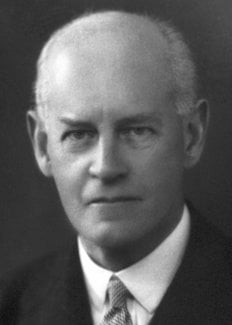John Galsworthy
Biographical

John Galsworthy (1867-1933) was educated at Harrow and studied law at New College, Oxford. He travelled widely and at the age of twenty-eight began to write, at first for his own amusement. His first stories were published under the pseudonym John Sinjohn and later were withdrawn. He considered The Island Pharisees (1904) his first important work. As a novelist Galsworthy is chiefly known for his roman fleuve, The Forsyte Saga. The first novel of this vast work appeared in 1906. The Man of Property was a harsh criticism of the upper middle classes, Galsworthy’s own background. Galsworthy did not immediately continue it; fifteen years and with them the First World War intervened until he resumed work on the history of the Forsytes with In Chancery (1920) and To Let (1921). Meanwhile he had written a considerable number of novels, short stories, and plays. The Forsyte Saga was continued y the three volumes of A Modern Comedy, The White Monkey (1924), The Silver Spoon (1926), Swan Song (1928), and its two interludes A Silent Wooing and Passersby (1927). To these should be added On Forsyte Change (1930), a collection of short stories. With growing age Galsworthy came more and more to identify himself with the world of his novels, which at first he had judged very harshly. This development is nowhere more evident than in the author’s changing attitude toward Soames Forsyte, the «man of property», who dominates the first part of the work.
Galsworthy was a dramatist of considerable technical skill. His plays often took up specific social grievances such as the double standard of justice as applied to the upper and lower classes in The Silver Box (1906) and the confrontation of capital and labour in Strife (1909). Justice (1910), his most famous play, led to a prison reform in England. Galsworthy’s reaction o the First World War found its expression in The Mob (1914), in which the voice of a statesman is drowned in the madness of the war-hungry masses; and in enmity of the two families of The Skin Game (1920).
This autobiography/biography was written at the time of the award and first published in the book series Les Prix Nobel. It was later edited and republished in Nobel Lectures. To cite this document, always state the source as shown above.
John Galsworthy died on January 31, 1933.
The Nobel Foundation's copyright has expired.Nobel Prizes and laureates
Six prizes were awarded for achievements that have conferred the greatest benefit to humankind. The 14 laureates' work and discoveries range from quantum tunnelling to promoting democratic rights.
See them all presented here.
